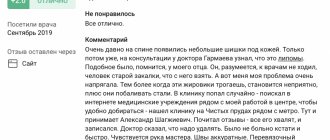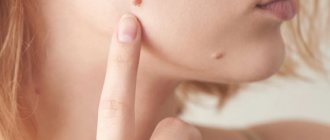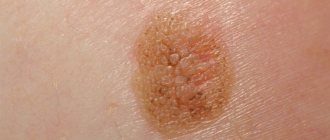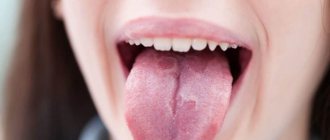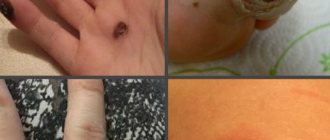From this article you will learn:
- What are the causes of ingrown nail plates?
- What are the methods for removing an ingrown toenail?
- How to remove an ingrown toenail using surgical and radio wave methods
- Is laser removal of ingrown toenails painful?
- How to avoid ingrown toenail removal
- How much does it cost to correct an ingrown toenail in Moscow?
Many people have experienced the disease of ingrown toenails, because almost a third of people suffer from onychocryptosis. This is the name of this problem when the nail plate cuts into the skin and causes inflammation, deformation of the nail, acute pain and suppuration of the skin. Both hands and feet are susceptible to this, but most often, of course, the big toes suffer from this disease. There are different ways to solve this problem, including removing the ingrown toenail or correcting it.
Ingrown toenail: causes of the disease
The lateral edge of the nail fold is injured by an improperly growing nail. A wound appears on the finger, which very often gets infected, causing inflammation. This is onychocryptosis. This problem cannot be solved independently with baths and steaming; it is necessary to remove the entire nail or part of it.
The symptoms of an ingrown toenail are familiar to many: the skin on the finger becomes red and swollen, pain occurs both when moving and at rest.
Causes of ingrown toenails:
- Irregular shape of the nail, an attempt to make a rounded shape often leads to too much cutting of the corners of the nail plate;
- Pressure shoes or boots, narrowed toes;
- Deformation of the nail plate due to fungal infection;
- Hereditary changes;
- Bumps or bruises of the fingers when the nail fold is injured;
- Obstructed blood flow in the vessels of the fingers, which is often found in diabetes.
In diabetes, an ingrown toenail is a more serious problem than in all other cases. It is necessary to pay very close attention to this, because the regeneration process of the skin is disrupted, and everything takes a long time to heal. If onychocryptosis is not treated, it can turn into gangrene, which can lead to surgery to remove the finger. Therefore, if you suffer from diabetes, seek medical help immediately as soon as you notice the first signs of an ingrown toenail.
Ingrown toenail: treatment and removal
If pain occurs, it is necessary to show the ingrown nail to a doctor so that he can determine the degree of ingrowth, whether there is a need for removal, and whether it is possible to remove only part of the ingrown nail while preserving the plate as a whole, and also check the condition of the remaining nails.
Most often it is necessary to remove nails on the big toes. If the ingrown toenail is caused by a fungal infection, you will have to undergo additional examinations:
- General tests to check the condition of the body (blood and urine).
- Bacterial tests to determine what type of fungus is causing the nail lesion and to prescribe the correct treatment.
- Allergy tests are necessary to relieve a possible allergic reaction of the body to painkillers that are used during laser surgery to remove an ingrown toenail.
If the process is in an advanced state, then an x-ray will also be needed to see if the bone tissue is affected. In case of inflammation of the finger or suppuration of the nail folds, it is necessary to first cure the infection that caused the inflammatory reaction, after which it will be possible to remove the ingrown nail. Only a doctor can determine what exactly caused the inflammation and prescribe the appropriate medications. Antifungal treatment may be required, necessarily anti-inflammatory and antiseptic. In the most severe cases, when a bacterial infection is detected, a course of antibiotics is prescribed. When the inflammation is cured, you can begin to remove the ingrown toenail.
Complications
With an advanced stage of an ingrown toenail and improper treatment, the following complications may occur:
- Gangrene of the finger is a serious complication in which tissue necrosis occurs. The only way out is complete removal of dead tissue - amputation of the finger.
- Inflammation of the soft tissues of the entire finger with the development of a purulent process, which requires immediate clinical treatment.
- The appearance of tumors requiring surgical removal.
- Purulent inflammation of the bones of the finger, requiring immediate conservative and surgical treatment.
- Other complications delaying the recovery process.
All complications of an ingrown toenail can lead to even more serious consequences if you do not consult a doctor in time. At the first symptoms of onychocryptosis, you should consult a doctor as soon as possible in order to avoid complications and longer treatment. The sooner you start treating an ingrown toenail, the faster and easier this process will be.
What are the methods for removing an ingrown toenail?
- Surgical removal of an ingrown toenail: the most common operation that will be performed in public clinics. With it, the removal of the nail occurs mechanically; it will not be possible to save part of the nail plate. This is a very painful operation with a long recovery period. After removing the nail plate, the open wound is treated with an antiseptic and bandaged. The average prices for the operation do not differ much from other, less traumatic methods and start from 2.5 thousand rubles.
- Radio wave removal of ingrown toenails: the Surgitron device is a radio wave knife used to perform operations to remove ingrown toenails. This method allows you to save most of the plate, cutting off only the damaged one. The radio wave acts purposefully, contactlessly and effectively. Local anesthesia allows the removal to be carried out absolutely without pain; you only have to endure the anesthetic injection itself. The wound will heal in the next two weeks and will no longer bother you, and complete recovery will occur in three months. The cost of this operation on average starts from 3.3 thousand rubles.
- Laser removal of ingrown toenails: Laser removal of ingrown toenails is the most gentle method and has a much shorter healing period. The laser beam, removing part of the nail plate that has grown into the nail fold, cauterizes the capillaries, reducing bleeding, relieves inflammation of the skin around the ingrown nail and accelerates regeneration processes. Therefore, the recovery period takes much less time than other methods, and also reduces the possibility of a similar problem reoccurring. The price for removing an ingrown nail with a laser starts from 2.5 thousand rubles.
Materials and tools for removing gel polish using the soaking method
To soak gel polish with a special liquid, we will need:
- a rough file, the abrasiveness of which is approximately 100 grit;
- cotton pads;
- scissors for cutting cotton pads;
- gel polish remover;
- aluminum foil (you can use food grade foil instead of professional grade);
- orange stick or metal pusher;
- buff;
- file for natural nails;
- cuticle oil and hand cream (if you do not plan to apply a new gel polish coating immediately or on the same day);
- paper towel or napkins.
Nail file classic pink 100/180 g ParisNail
Gel polish remover E.MiLac Remover 1000 ml
Orange sticks small IRISK 90-100 pcs
Pusher for manicure P-09 wide spatula/peak length 132 mm Nippon Nippers
Buff mini 100/180 white ParisNail 50 pcs
Disposable files 220/280 11.5 cm (05 Turquoise) IRISK 10 pcs/pack
Two-phase cuticle oil strengthening Apple Vogue Nails 10 ml
Nourishing hand cream “Delicious hands” Blackcurrant IRISK 250 ml
Instead of liquid, you can use special napkins for soaking gel polish.
In this case we will need:
- rough nail file;
- gel polish remover wipes;
- orange stick or metal pusher;
- buff;
- file for natural nails;
- cuticle oil and hand cream (if you do not plan to re-coat);
- paper towel or napkins.
Straight file black UT-401 A 100-180 ZINGER
Wipes for removing gel polish, polish in individual packaging InGarden 200 pcs
Orange sticks medium IRISK 8 pcs
Buff mini 100/180 black ParisNail 50 pcs
Disposable files 220/280 11.5 cm (06 Purple) IRISK 10 pcs/pack
Cuticle oil “Jasmine” in pencil ruNail
Hand cream Cream Oil with grape seed oil and jojoba ARAVIA 550 ml
How is an ingrown toenail removed surgically?
The entire operation lasts about half an hour. You will not feel the removal process itself; the only painful moment is when the doctor gives an injection of an anesthetic drug, which is injected into the damaged area of the skin. The anesthesia begins to take effect almost immediately; you will no longer feel your finger. The most well-accepted painkiller by the body is the one that does not cause an allergic reaction, for which allergy tests are done. Ultracaine is most often used in practice; it gives a stable reaction.
Recommended articles on the topic:
- Medical hardware pedicure
- Curvature of the nail plate
- How to strengthen peeling nails
The most important task of this operation is not to remove the ingrown nail, but to work with the matrix of the nail plate, which is located under the soft tissue. It is necessary to destroy its edges so that the nail grows and develops differently. Then this operation will have a long-term effect, otherwise the problem will be solved only this time, and as the nail grows, it will go the same way and grow back. When working with the nail matrix, the shape of the nail itself will change, then onychocryptosis will not recur.
After the operation to remove the ingrown nail is completed, the wound is covered with a bandage. When the anesthesia wears off, pain will appear and the wound will bleed.
After removal, you will need to bandage and treat the wound daily. To do this, you need to use special solutions. The healing process will be quite slow. When bandaging, the problem of gluing the bandage to an open wound often arises. There is no need to tear it off, you definitely need to soak the bandage in warm water so that it comes off on its own, after which you can rinse it and cover the wound with sterile cotton wool soaked in medications and bandage it again.
You should not be afraid of pain during surgery to remove an ingrown toenail, because the anesthetic injection and the first days of recovery cannot be compared with the torment that the ingrown toenail itself causes, including the inability to walk.
Before removal, check with your doctor whether the shape of the nail will be corrected and the edges of the subcutaneous matrix will be removed. Under this condition, after recovery, you will be able to return to your favorite shoes and forever forget what onychocryptosis is.
Hardware method
Many people like hardware pedicure because it feels like cutting your nails.
Using this method, you can get rid of damaged horny plates on the nail quickly and almost painlessly. In most cases, one session is enough to relieve the patient of an unpleasant illness. The procedure is performed exclusively in a medical facility under highly sterile conditions using a special apparatus.
The essence of the method is layer-by-layer removal of infected layers down to the soft tissue of the bed. This ensures rapid and deep penetration of antifungal agents into the nail. Before starting the procedure, the nail is disinfected, and then it is softened with special preparations. The removal itself is carried out using nozzles with diamond tips and metal cutters.
Hardware pedicure has a number of advantages over the surgical method:
- painlessness;
- the treatment period is reduced by 2 times;
- there is no major bleeding of the treated area;
- restored nails do not lose their aesthetic appeal.
Now it is possible to purchase machines with attachments for hardware pedicure and perform the procedure yourself. However, illiterate actions and failure to comply with sterility rules can aggravate the situation and lead to serious complications.
Hardware pedicure is not recommended for pregnant women, allergy sufferers, patients suffering from kidney or liver diseases, or those with dermatological pathologies.
How to remove an ingrown toenail using the radio wave method
The radio wave method for removing ingrown toenails is superior to the surgical method in all respects. It is painless and effective, with a shorter recovery period. It is possible to preserve the nail plate by removing only the ingrown part. Recurrence of cases of ingrown toenails using this method is extremely rare.
The entire removal process will only take 3-5 minutes. Moreover, the sooner you seek help, the faster and easier the operation will be. Of course, here you won’t need to go to the hospital; you will be quickly operated on and sent home.
The only unpleasant part of removing an ingrown nail will be an anesthetic injection into the sore finger, after which you will no longer feel it. Next, the doctor will use a radio wave knife to remove the ingrown part of the nail and the edges of the nail matrix so that the problem does not recur. When soft tissue grows around an ingrown nail, the necessary correction is carried out using the radio wave method.
After all the manipulations, which do not take much time, an antiseptic bandage is applied to the operated finger, and you can safely go home.
At home you will have to do the dressings yourself. There is no need to change the protective layer every day; you will only need to do 2-4 dressings during the entire recovery period, which lasts a week. You just need to make sure that the bandage does not get wet. Primary healing of the wound occurs in the first 2-3 days after removal of the ingrown nail. If you are sensitive to pain, you may need to take simple painkillers for the first few days, but most people do not experience any discomfort after this operation.
Benefits of radio wave treatment:
- In any hospital that performs such ingrown toenail removal, you will receive help on the same day, sometimes in the next two days if there are a lot of patients.
- You will not feel any pain.
- Recurrence of the ingrown toenail problem is virtually impossible.
- The operation affects only damaged skin and nail plate. The entire finger, the healthy part of the nail and unaffected skin are not injured.
- Complications after removal by this method, such as suppuration, swelling or infection, do not occur due to the antiseptic effect of the radio wave method.
- The recovery process is faster than other methods, due to the preservation of undamaged areas of the skin and nails.
- The dressing can be changed every few days.
- You can go to work and return to your daily routine the very next day after surgery.
- This method of removing ingrown toenails has been used for quite some time, and the process has been worked out, so medical errors are practically excluded.
Disadvantages of radio wave treatment.
Only one drawback was identified - to remove an ingrown toenail using the radio wave method, it is necessary to correctly calculate the power of exposure. With insufficient exposure, the problem may return in the future, and with too much exposure, deformation of the nail plate and poor nail growth will occur.
It all depends on the doctor and his experience in removing ingrown toenails using this method. If a doctor has been working with this technology for a long time, then there will be no problems. Therefore, when choosing a clinic, it is worth asking what doctors work there and what experience they have.
How to remove a nail affected by fungus using pharmaceutical products
Therapy of onychomycosis is carried out with special drugs, most of which have a complex effect:
- antifungal;
- antiseptic;
- keratolytic;
- softening.
Removal of nails affected by fungus is carried out with softening varnishes, ointments or plasters. In 80% of cases, damaged parts can be removed in 2-3 procedures.
Before applying the drug, all areas affected by the fungus are treated with antiseptics - Chlorhexidine, Miramistin, Furacilin solution.
Plasters
A patch is a nail remover that softens the stratum corneum on the fingers. Facilitates the removal of layers infected with fungus. Most patches contain:
- keratolytics – trichloroacetic and salicylic acids, urea;
- antiseptics – miramistin, ammonia, chlorhexidine;
- antimycotics – bifonazole, miconazole, ketoconazole.
When treating fungus, the following keratolytic plasters are used:
- Mycospor is a patch with a pronounced antifungal and keratolytic effect;
- Onychoplast is a patch with urea, paraffin and beeswax, which additionally disinfects the skin in affected areas;
- Ureaplast is a urea-based product that softens nails and destroys fungal spores;
- Fungiplast is a drug with a fungicidal and softening effect that makes it easier to remove part of the infected nail.
To remove all layers of fungus, it is recommended to apply for at least 5 days.
Lucky
Products in the form of varnishes act similarly to keratolytic patches. They are applied in several layers after steaming the hands or feet. Most varnishes contain fungicidal components. Therefore, they treat not only the areas infected with the fungus, but the entire surface of the horny plate. Periodically, the softened layers are cleaned off with nail scissors, a file, or a milling cutter.
To remove the nail plate with nail fungus, the following are prescribed:
- Batrafen;
- Mikozan;
- Loceril.
Keratolytic varnishes should not be confused with varnishes designed to kill fungus.
The former soften the horny covering of the fingers, and the latter destroy the fungal infection. Compared to other forms of keratolytic agents, varnishes are easier to apply. Before the procedure, the periungual fold is not covered with adhesive tape or treated with fatty creams. The risk of getting a chemical burn when using varnish is minimal.
Ointments
With advanced onychomycosis, the deep layers of the nail are affected. To defeat the infection, all layers of the plate are removed down to the affected area. Ointments and creams have better penetrating ability.
To remove nails use:
- Loceryl is a cream with amorolfine and urea, which is intended for the gentle removal of nails with fungus;
- Nogtivit is a product with urea and essential oils that has disinfecting and keratolytic properties;
- Nogtimycin - cream for removing nails for fungus with keratolytic and fungicidal activity;
- Mycospor is an ointment with bifonazole and urea, which is intended for non-surgical nail removal.
When treating affected areas with keratolytic ointments, the following recommendations should be followed:
- the product is applied to the lesions in a thin layer once a day;
- the treated areas are sealed with adhesive tape;
- the dressing is changed every 24 hours;
- between changing bandages, steam your legs or arms;
- the exfoliating parts of the horny cover are removed with a scraper;
- After the procedure, the nails are covered with a layer of ointment.
Therapy is carried out for at least 2 weeks in a row. When the subungual space acquires a smooth structure, this indicates the destruction of the fungus.
Laser removal of ingrown toenails: from preparation to rehabilitation
1. Preparation
When removing an ingrown toenail with a laser, you will have to undergo preparatory procedures, such as a general blood test, a visit to a dermatologist and a surgeon, who will clarify whether the removal method has been chosen correctly and whether it is justified.
2. Laser removal procedure for ingrown toenails
Removal itself takes about half an hour and is done in the same way as others, under local anesthesia, which eliminates the strong impact on the body, difficulties in getting out of it and the occurrence of complications.
Laser removal is carried out only on the ingrown part of the nail; the rest of the plate can be left. Additionally, when exposed to laser, the wound is cleaned, tissue inflammation is removed, and fungal spores evaporate, which cures the nail from this problem.
3. Rehabilitation period
For the first week, you will need to cover the wound with a bandage and apply dressings with medications that the doctor will prescribe to you after removal. Full recovery will last around one to one and a half months.
4. Complications
There are no special complications in the postoperative period due to the fact that the laser kills microbes and disinfects affected tissues, seals blood vessels, which avoids excessive bleeding from the wound.
The only complication is the possible return of the disease, which occurs, although rarely, with laser surgery.
Laser removal of an ingrown toenail allows you to preserve the nail plate, avoid its deformation and not expose soft tissue, which makes recovery easier.
Is laser removal of ingrown toenails painful?
The most common question that patients have is how painful it is to remove an ingrown toenail with a laser. All doctors are absolutely unanimous on this issue - when exposed to local anesthesia, a person will not feel anything.
There is absolutely no need to be afraid of this removal procedure, and it is best to seek help in time, which will relieve you of problems such as acute pain, the appearance of pus in the affected area, swelling of the finger, and difficulty walking. If you let the situation go in the hope that everything will go away on its own, the inflammatory process can lead to serious complications, including removal of the entire finger. Therefore, timely treatment and laser correction of an ingrown toenail is an excellent solution to the problem, which will prevent the disease from developing and subsequently reoccurring.
Call your doctor if you have:
- temperature 100.4°F (38°C) or higher;
- chills;
- any of the following symptoms in or around the wound: increasing redness or swelling of the tip of a finger or toe;
- increasing pain or discomfort;
- skin that is hard, warm, or hot to the touch;
- bright yellow or green discharge;
- unpleasant odor from the skin or nails;
- bleeding that does not stop after pressing the napkin;
- discoloration of the tip of a finger or toe to blue or purple;
to come back to the beginning
Removing an ingrown toenail: patient reviews
Victoria (27 years old), Moscow
The first time I removed an ingrown toenail was in June 2014, and, unfortunately, the problem returned in September. Initially, the problem arose in adolescence. I cut my nail incorrectly and it started to grow in. I had to keep an eye on it all the time, steam it, and process it correctly. I had to do everything myself; I didn’t visit pedicure salons. Now I am already 27 years old, and this year it came to surgery. After the birth of my child, I stopped paying due attention to my nails, I didn’t have enough time, and, as a result, I had to go for laser removal. The operation itself was painless, the only problem was the injection. The whole process went very quickly: I didn’t feel any pain or smell, I was just very worried. Immediately after the operation, I walked to the car without any problems, the anesthesia began to wear off, and I was scared. I had to urgently send my husband to get painkillers and drink them. I'm not sure it was really necessary. Despite my finger, I was able to get back behind the wheel on the third day, and when I came for a dressing, I observed that all the people around me were walking normally after the removal and were not limping.
In September of the same year, we went on vacation to the sea, and on a pebble beach, a small pebble hit me in the same nail, which is why the problem returned again. I tried to cure it with steaming and ointments, but there was an improvement. At the same time, the nail began to grow very crookedly, as if folded in half, and grew in with the inner part. I decided to try to correct the situation myself: I cut off the entire top layer of the nail in the hope that it would continue to grow normally, but, unfortunately, this did not help, the inflammatory process began again, and now I am again going to remove the ingrown nail, only to a different doctor .
Despite everything, I recommend the laser removal method, because I don’t see any better options, and also take care of the nail until it is completely restored, do not walk on stones, do not play football, and so on.
Inna (33 years old), Saratov
For the first time in my life I encountered the problem of an ingrown toenail several years ago. Most likely I cut it incorrectly, and it grew crookedly from the beginning. Of course, it’s better to get a pedicure in a salon from a professional to keep it in shape, but I can’t afford it, I have to cut my hair myself. And as soon as you made a mistake once, a red and painful finger immediately appeared. I really don’t like doctors, this problem dates back to my childhood, and I try not to see them without serious reasons. So now I started looking for information on the Internet, hoping to deal with my finger on my own. Initially there was no talk about surgery to remove an ingrown toenail.
I liked the salt bath method. I started doing it right away, didn’t start the process, and while steaming, carefully trimmed the diseased nail. The situation improved, the nail grew back, and I forgot about this problem for several more years, until I bought crazy beautiful shoes with tapered toes. Very narrow, they squeezed to the point of impossibility, but what can you do for the sake of beauty. I wore them often, just admired them, and didn’t pay attention to the fact that they hurt my legs. Unfortunately, this brought corresponding results, and my finger, which was injured last time, this time became the color of those same shoes - bright red. The pain began to be unbearable, not only in shoes, but now I could not walk in anything. I remembered my past experience and started doing salt baths, but apparently I missed the right moment, and this time I didn’t get any results. The ingrown toenail festered, and I had to go to the Internet again for advice. I found out about Vishnevsky’s ointment, started applying it, making bandages with medicine, but nothing helped, it had already reached the “meat” stage. I had to resign myself and ask my husband to make an appointment for me with a surgeon; I was never able to do it myself.
My husband went with me for the removal, I was very scared, but, thank God, I was lucky with the doctor. Yuri Sergeevich is such a positive person, he supported me, promised that there would be no pain at all, and after 15 minutes, he would let me go home. And everything turned out to be true - after 15 minutes my husband and I left his office, and it didn’t hurt at all. Later I found out that this was a radio wave method for removing an ingrown nail, which means this problem will not return to me. As far as I understand, no other method can provide such a guarantee. Everything healed very quickly, and now I walk in my favorite red shoes, of course, the same ones, and nothing else bothers me. I hope my review will be useful to those who, like me, are faced with the problem of ingrown toenails.
Olga (41 years old), Moscow
I have a problem with ingrown toenails all the time. I have already contacted the surgeon 3-4 times; mechanical removal operations have been performed. But as the nail grows, everything repeats itself again. I don’t see any sense in these operations: all the nail folds are always wounded and inflamed, and severe suppuration constantly occurs. I don’t know what to do with this anymore.
Of course, I take care of my nails correctly, cut them carefully, leave the edges even, my shoes are all wide, but the problem does not go away - my feet constantly hurt. There is no strength anymore. I decided that it would be better to remove these nail ridges on both sides altogether, so that there would be nowhere else to grow. I’ll wait until summer comes so I can go through this horror in flip-flops, otherwise the bandages will stick again, and removing them will be torture.
All that remains is to find a surgeon who can actually agree to such a removal. But I don’t care anymore - let the finger look ugly like a triangle, rather than endure ingrown nails again.
Eliminating Side Effects
After the procedure, you may experience throbbing, pain, swelling, bleeding, discharge, and tenderness in the affected finger or toe. To help manage these side effects, follow these recommendations.
- For the first 48 hours after the procedure, elevate the affected arm or leg as high as possible above heart level. This will help reduce pain and swelling. For 1 week, try to keep the affected arm or leg elevated as often as possible.
- If you experience bleeding, press a clean gauze pad firmly onto the wound for 15 minutes. If the bleeding has not stopped after 15 minutes, apply firm pressure to the wound for another 15 minutes. If the bleeding still doesn't stop, call your doctor.
- If desired, you can take acetaminophen (Tylenol®) or extra strength acetaminophen (Extra Strength Tylenol®) to relieve pain or discomfort. Do not take aspirin or nonsteroidal anti-inflammatory drugs (NSAIDs) such as ibuprofen (Advil®) or naproxen (Aleve®). These medications may increase bleeding. Follow dosage directions on the package. If the recommended dosage does not relieve pain, call your doctor.
- If you are allergic to acetaminophen or have a medical condition that prevents you from taking it, ask your healthcare professional what medicine you can take instead.
- If you are participating in a clinical trial for cancer treatment, ask your oncologist (cancer treatment doctor) what pain medications you may take.
to come back to the beginning
Is it possible to avoid removing an ingrown toenail?
The big toe suffers the most from this disease. This causes a lot of troubles, such as pain in the finger, swelling, difficulty walking, and if the process is started, then inflammation already occurs, pus appears, and the problem becomes much more serious. If you start treatment on time, you can try to avoid surgery and nail removal.
Podiatrists specialize in correcting the nail plate, and in simple cases of ingrown toenails, the ongoing procedures they carry out can help. There are special linings under the nail corners that prevent it from growing further, relieve pain and help heal wounds. If you manage to stop the development of the disease in this way, then subsequent constant care will prevent the ingrown nail from returning to you again, and you will be able to avoid removal.
If your problem has become chronic, with a constant return after short-term relief, then the treatment tactics should be different. In frequent cases of ingrown toenails, the tissues at the edges become denser, and suppuration processes begin inside. In this case, you will have to first remove the inflammatory process and only then adjust the edges of the nail with a radio wave knife, and then change the shape of the nail using special staples or plates.
Methods for correcting ingrown toenails:
Correction Brace Method
A special Fraser bracket was invented to bring the nail shape to the desired look. This type of adjustment is absolutely painless. It looks like this: a thin medical wire is fixed in the center of the nail with a special gel, and it is attached to the edges of the nail with additional hooks.
This method of treatment helps:
- Reduce pressure on the nail fold;
- Relieve pain, swelling, redness;
- Raise the edge of the plate that was causing inflammation. After a few days, it will be possible to carefully remove it;
- Correct the correct growth of the nail, which is physiologically formed.
For the summer period, you can decorate such a brace in various ways, making it an element of nail art, which will help you look stylish and original during treatment - corrective braces make excellent decorations.
The price for installing a corrective brace at the Veronika Herba City Beauty and Health Center in Moscow starts from 4.5 thousand rubles.
Correction plates
Another way to treat an ingrown toenail without surgery is to install special B\S plates and ONICLIP plates. The plate affects the area near the growth part of the nail and is glued across its growth. Its design causes a reverse force, which slightly lifts the nail upward and prevents the tips from growing in. If the nail has already grown in, then when the plate is installed, the edges begin to rise and then grow normally, the wounds on the nail folds heal. After complete restoration, the plate can be removed. During treatment, it can be hidden under a layer of varnish; the plate is thin enough and will not be visible. With proper treatment, it will be possible to avoid removing an ingrown toenail.
Treatment with correction plates gives the following effect:
- When the edges of the nail are softened with special ointments, the correction plate easily lifts them above the skin, the pain immediately goes away, and the wounds gradually begin to heal;
- The plates correct deformed nails, while relieving inflammatory processes;
- The nail is straightened due to the elasticity and resistance of the plate itself, without additional procedures;
- After completing the course of adjustment, the nails acquire their original physiological appearance and shape.
If you want to avoid surgical removal of an ingrown toenail by 99%, then installing corrective staples or plates will give the desired effect by straightening the nail plate and returning the nail to its physiological shape. The cost of the procedure at the Veronika Herba City Beauty and Health Center in Moscow starts from 2.4 thousand rubles.
Restoring the nail plate with gel
Podiatrists use this method to initiate self-healing of an ingrown toenail. This opportunity appears when a corrective, very dense gel is applied to the nail, which is given the required shape. The big advantage of this procedure is that the gel is completely invisible, and the nail does not differ from the rest either in color or shape.
Indications for gel nail restoration:
- Nail injury;
- Deformation of the nail plate;
- Flattened or springboard-shaped nails.
In this case, the following happens to the nail:
- The nail is covered with a thick layer of gel, forming the correct shape;
- The nail is disconnected from external stimuli and switches to recovery mode;
- Moisturizing the nail reaches the required level;
- The special durable coating has its own level of resistance and, as the nail grows, gives it the correct shape;
- If you carry out this corrective procedure for a long time, the nail will return to its original shape, become stronger, and you will not need to remove the ingrown nail.
The price of gel correction in Moscow, at the City Beauty and Health Center “Veronika Herba”, starts from 1.7 thousand rubles.
If you notice an ingrown toenail, do not delay, do not wait for surgical removal, come to the Veronika Herba City Beauty and Health Center. Our specialist podologists will treat your nails using the most gentle methods. Our medical centers are located in Moscow; we employ only experienced doctors who will restore your legs to their former beauty and relieve you of suffering.
You don't have to spend a lot of time performing complex and unpleasant procedures at home. It is much easier to seek help from real professionals - the Veronika Herba beauty and health center, equipped with effective and modern equipment. There are two such centers in Moscow – near Timiryazevskaya metro station and Otradnoye metro station.
Why clients choose Veronika Herba Beauty and Health Center:
- This is a beauty center where you can take care of yourself at a reasonable cost, while your face and/or body will be treated not by an ordinary cosmetologist, but by one of the best dermatologists in Moscow. This is a completely different, higher level of service!
- You can receive qualified help at any time convenient for you. The beauty center is open from 9:00 to 21:00, seven days a week. The main thing is to agree with your doctor in advance on the date and time of your appointment.
Sign up for a consultation with a specialist by phone +7 (495) 085-15-13
, and you will see for yourself!
Folk remedies
In addition to pharmaceutical drugs, for ingrown or fungal nails, you can use improvised means. The most effective recipes:
| Means | Application |
| Butter |
You can use Vaseline instead of butter |
| Birch mushroom |
|
| Fir oil |
|
| Onions and honey |
|
| Plantain |
|
The following recipes are used for therapeutic baths:
- Prepare a chamomile decoction. Take 4 tbsp. l. inflorescences per 1 liter of boiling water. Boil for 10 minutes and strain. Add 5 tbsp. l. salt.
- Dissolve potassium permanganate crystals in hot water. The liquid should turn dark purple. Dilute with water until the solution turns deep pink.
- Dissolve 2 tbsp in 2 liters of hot water. l. baking soda and add 2-3 drops of alcohol tincture of iodine.
- Dissolve 50 g of salt and 25 g of soda in 2 liters of hot water. Add 1 tbsp. l. Yoda.
- Add a glass of salt and 100 ml of castor oil to 3 liters of warm water.
Baths should be taken for half an hour. If purulent masses are present, then soaring your feet is prohibited.
An effective way to treat it at home is to file the nail. First you need to thoroughly steam your feet. From the base to the edge, approximately 70% of the thickness of the plate is cut. To do this, use a nail file or file. It is recommended to perform this procedure once every 3 weeks. Gradually the nail grows over, and the edges are freed from the skin and do not grow in.




